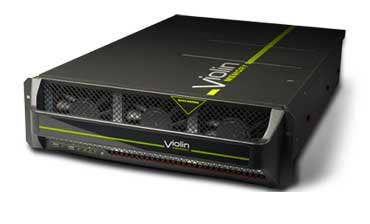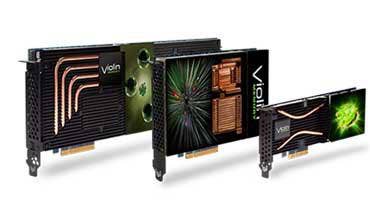Violin Memory Post-IPO Fall Caused By Bad Timing, Fast-Maturing Flash Storage Market: VARs

Last week's disappointing IPO of flash storage vendor Violin Memory is less about the company's industry-leading technology and more about how the company goes to market, according to several solution providers closely following the flash storage industry.
Violin Memory on Sept. 27 opened its IPO by selling about 18 million shares at $9 each, giving it a total IPO of $162 million. However, share prices closed that day at $7.02, and despite hitting a peak of $7.85 on Tuesday have struggled to rise. The company's share prices closed this week at $7.51 per share.
The low share price comes despite a robust and fast-growing market for flash storage. IDC in April estimated the all-flash storage array market will hit $1.2 billion by 2015. Analyst firm IHS in August said SSD shipments in the first quarter of 2013 nearly doubled compared to shipments in the first quarter of 2012.
[Related: Pure Storage Gets $150M Funding, Talks Big Plans For All-Flash Storage Arrays ]
Violin Memory's product line stretches from all-flash storage arrays for primary storage to PCIe flash storage accelerators to software for managing flash storage.
The company has done well. Aaron Rakers, an analyst with Stifel Nicolaus Equity Research, wrote in July that, based on Gartner data, Violin Memory had a 19.4 percent share of the flash storage array market in 2012, which was ahead of such established companies as EMC, IBM and NetApp.
Meanwhile, the company is looking to break away from a pack of competitors that include flash memory accelerator makers like Fusion-io and LSI.
It also has to compete with relative startup developers of all-flash storage arrays or hybrid flash-disk arrays such as Mountain View, Calif.-based Pure Storage; Newton, Mass.-based Kaminario; and Boulder, Colo.-based SolidFire.
Competitors also include well-established legacy storage vendors that are developing all-flash storage arrays and PCIe flash storage adaptors including EMC with its XtremIO acquisition and NetApp and its FlashRay plans, along with companies like Hitachi Data Systems, Hewlett-Packard and Dell, which have introduced all-flash versions of existing arrays.
While Violin has great technology, an IPO is just an IPO, said Keith Norbie, director of server, virtualization and storage for the Eastern US at Technology Integration Group (TIG), a San Diego-based solution provider.
"The IPO is just part of the ups and downs of an emerging technology sector," Norbie said. "People are quick to predict doom."
NEXT: Bad Timing and Violin Memory's IPO

Flash storage has a strong future, and the growth of startups like Pure Storage, PernixData and Nimble Storage is off the charts, TIG's Norbie said.
However, Violin's IPO could have been the victim of bad timing, coming closely after EMC acquired XtremIO, and IBM unveiled plans to invest $1 billion in the flash storage market, including its acquisition of Texas Memory Systems (TMS), Norbie said.
The key to Violin Memory's future depends on how pervasive flash storage will be in the data center, he said.
"Companies can't just focus on the millions-of-IOPS [IOs per second] part of the market," he said. "I like what Pure Storage is doing. They're going to a broad marketplace, like Data Domain did back when it came out with its first deduplication appliance."
Time will tell, Norbie said. "Violin has one of the highest-performing architectures," he said. "But how pervasive will that be in a typical data center? The average storage deal is $75,000 to $100,000. The average flash storage deal is $150,000. Violin, however, is looking at the highest-performance workloads. So until flash is pervasive in the data center, that's the market parameter for the flash market."
When Violin Memory first came to market, it had what seemed to be the best performance, said Rich Baldwin, CIO and chief strategy officer at Nth Generation Computing, a San Diego-based solution provider.
However, over time, others also joined the market, with some like Fusion-io having equally good product at lower price points, Baldwin said.
"Violin went for the high-end enterprise," he said. "But a lot of guys found they could get flash storage cheaper."
The Violin Memory IPO might have been a year to 18 months late, Baldwin said. "There was a time when Violin had a unique product," he said. "Violin and Fusion-io were known as the best. Now several smaller companies have joined them in the market."
Now that EMC, IBM and the other top vendors have made flash storage acquisitions or have invested heavily in their own flash technology, there is no one big enough to acquire a company like Violin Memory, Baldwin said.
NEXT: IPO May Be 'Necessary Evil'
Furthermore, while flash storage vendors are all trying hard to differentiate themselves, customers are not doing a lot of the necessary testing or are holding bake-offs between vendors to find out which vendor is best for their particular needs, Nth Generation's Baldwin said.
"No single vendor out there is a 'Nirvana" that can solve all a customer's problems," he said. "And the demise of [cloud storage provider] Nirvanix reminds customers that they have to be careful with newer vendors."
Brad Maltz of the office of the CTO at Lumenate, a Dallas-based solution provider, said the flash storage market is very quickly becoming a commodity market.
"Even though the flash vendors are doing different things, their goal is to deliver as many IOs as possible," Maltz said. "The problem is, not everyone is innovating at the same pace."
For a company like Violin Memory, an IPO is a necessary evil due to the fact that all the major storage companies have acquired flash vendors, Maltz said.
"Violin needed to establish its value, and so needed the IPO," he said.
Violin Memory executives declined to comment on this story.
PUBLISHED Oct. 4, 2013